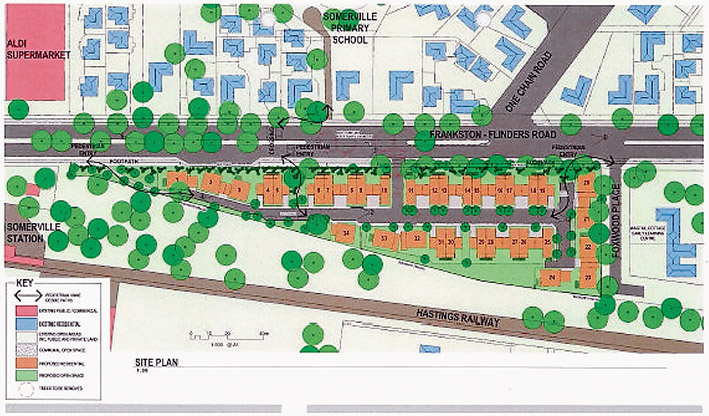AN irregular-shaped block of surplus railway land at Somerville is proposed to be sold for housing.
For train aficionados this would represent a much sought-after opportunity to get close to passenger and freight services.
Residents could look forward to unparalleled growth in container movements, based on the Mornington Peninsula Shire’s dream to help create a massive port at Hastings, with kilometre-long freight trains running day and night.
The proposal, discussed at council on 15 March, comes from VicTrack, a state-owned business enterprise run by an independent board.
It plays a pivotal role supporting the state government to provide improved public transport outcomes “without relying on government funding”, according to its website.
The 1.1-hectare roughly triangular lot is part of the Somerville station land to be rezoned from Public Use to General Residential – medium density – of no more than 34 dwellings, four of which would be provided for affordable housing.
However, permit conditions placed on the land would detract substantially from a railway buff’s noisy enjoyment of their property – such measures as “a high quality boundary fence (in terms of materials, colours, height, acoustic protection and appearance) along the western boundary” are envisaged.
This might require the householder to build an additional storey, with observation deck, to overlook the acoustic fence and retain their railway view.
Appropriately, the land will be dealt with under “a new fast-track planning scheme amendment process specifically put in place for the sale of state government land”, councillors were told.
VicTrack had retained sufficient land for possible duplication and electrification of the rail line, staff said.
Questioned by councillors, strategic projects and planning team leader Frank Mangan undertook to ask the government why the surplus land was “in that particular shape”.
Councillors also voted to seek further information about VicTrack’s justification for selling the land and for council to substitute development requirements with a shire-initiated alternative document.
They also specified that the item return to council within 60 days – after discussion that the government might require 90 days to respond to the shire’s questions, based on past shire experience with Spring St.


